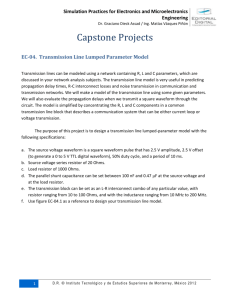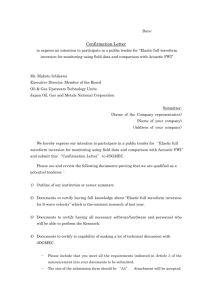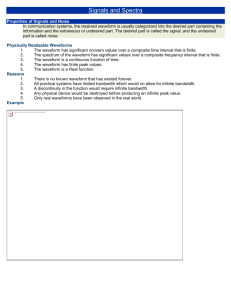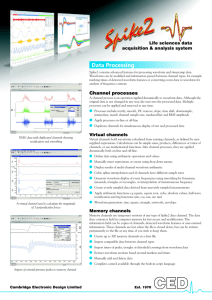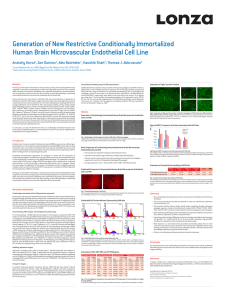cm H 2 O
advertisement
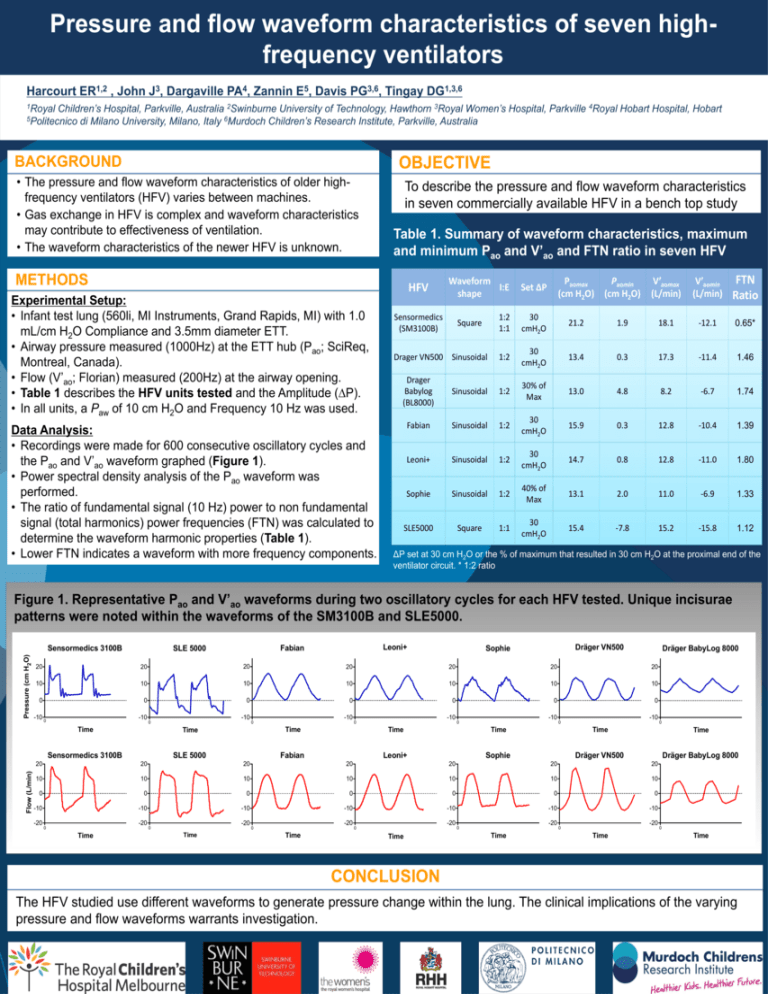
Pressure and flow waveform characteristics of seven highfrequency ventilators Harcourt ER1,2 , John J3, Dargaville PA4, Zannin E5, Davis PG3,6, Tingay DG1,3,6 1Royal Children’s Hospital, Parkville, Australia 2Swinburne University of Technology, Hawthorn 3Royal Women’s Hospital, Parkville 4Royal Hobart Hospital, Hobart 5Politecnico di Milano University, Milano, Italy 6Murdoch Children’s Research Institute, Parkville, Australia BACKGROUND OBJECTIVE • The pressure and flow waveform characteristics of older highfrequency ventilators (HFV) varies between machines. • Gas exchange in HFV is complex and waveform characteristics may contribute to effectiveness of ventilation. • The waveform characteristics of the newer HFV is unknown. To describe the pressure and flow waveform characteristics in seven commercially available HFV in a bench top study Table 1. Summary of waveform characteristics, maximum and minimum Pao and V’ao and FTN ratio in seven HFV METHODS HFV Experimental Setup: • Infant test lung (560li, MI Instruments, Grand Rapids, MI) with 1.0 mL/cm H2O Compliance and 3.5mm diameter ETT. • Airway pressure measured (1000Hz) at the ETT hub (Pao; SciReq, Montreal, Canada). • Flow (V’ao; Florian) measured (200Hz) at the airway opening. • Table 1 describes the HFV units tested and the Amplitude (DP). • In all units, a Paw of 10 cm H2O and Frequency 10 Hz was used. Data Analysis: • Recordings were made for 600 consecutive oscillatory cycles and the Pao and V’ao waveform graphed (Figure 1). • Power spectral density analysis of the Pao waveform was performed. • The ratio of fundamental signal (10 Hz) power to non fundamental signal (total harmonics) power frequencies (FTN) was calculated to determine the waveform harmonic properties (Table 1). • Lower FTN indicates a waveform with more frequency components. Sensormedics (SM3100B) Square Drager VN500 Sinusoidal Drager Babylog (BL8000) Fabian Leoni+ Sophie Set ΔP Paomax (cm H2O) Paomin (cm H2O) V’aomax (L/min) V’aomin (L/min) FTN Ratio 1:2 1:1 30 cmH2O 21.2 1.9 18.1 -12.1 0.65* 1:2 30 cmH2O 13.4 0.3 17.3 -11.4 1.46 1:2 30% of Max 13.0 4.8 8.2 -6.7 1.74 1:2 30 cmH2O 15.9 0.3 12.8 -10.4 1.39 1:2 30 cmH2O 14.7 0.8 12.8 -11.0 1.80 1:2 40% of Max 13.1 2.0 11.0 -6.9 1.33 1:1 30 cmH2O 15.4 -7.8 15.2 -15.8 1.12 Waveform I:E shape Sinusoidal Sinusoidal Sinusoidal Sinusoidal SLE5000 Square ΔP set at 30 cm H2O or the % of maximum that resulted in 30 cm H2O at the proximal end of the ventilator circuit. * 1:2 ratio Figure 1. Representative Pao and V’ao waveforms during two oscillatory cycles for each HFV tested. Unique incisurae patterns were noted within the waveforms of the SM3100B and SLE5000. Flow (L/min) Pressure (cm H2O) Sensormedics 3100B Leoni+ Fabian SLE 5000 Dräger VN500 Sophie Dräger BabyLog 8000 20 20 20 20 20 20 20 10 10 10 10 10 10 10 0 0 0 0 0 0 0 -10 -10 -10 -10 -10 -10 -10 0 0 0 0 0 0 Time Time Time Time Time Time Time Sensormedics 3100B SLE 5000 Fabian Leoni+ Sophie Dräger VN500 Dräger BabyLog 8000 20 20 20 20 20 20 20 10 10 10 10 10 10 10 0 0 0 0 0 0 0 -10 -10 -10 -10 -10 -10 -10 -20 0 -20 0 Time -20 0 Time -20 0 Time -20 0 Time -20 0 Time -20 0 Time 0 Time CONCLUSION The HFV studied use different waveforms to generate pressure change within the lung. The clinical implications of the varying pressure and flow waveforms warrants investigation.

